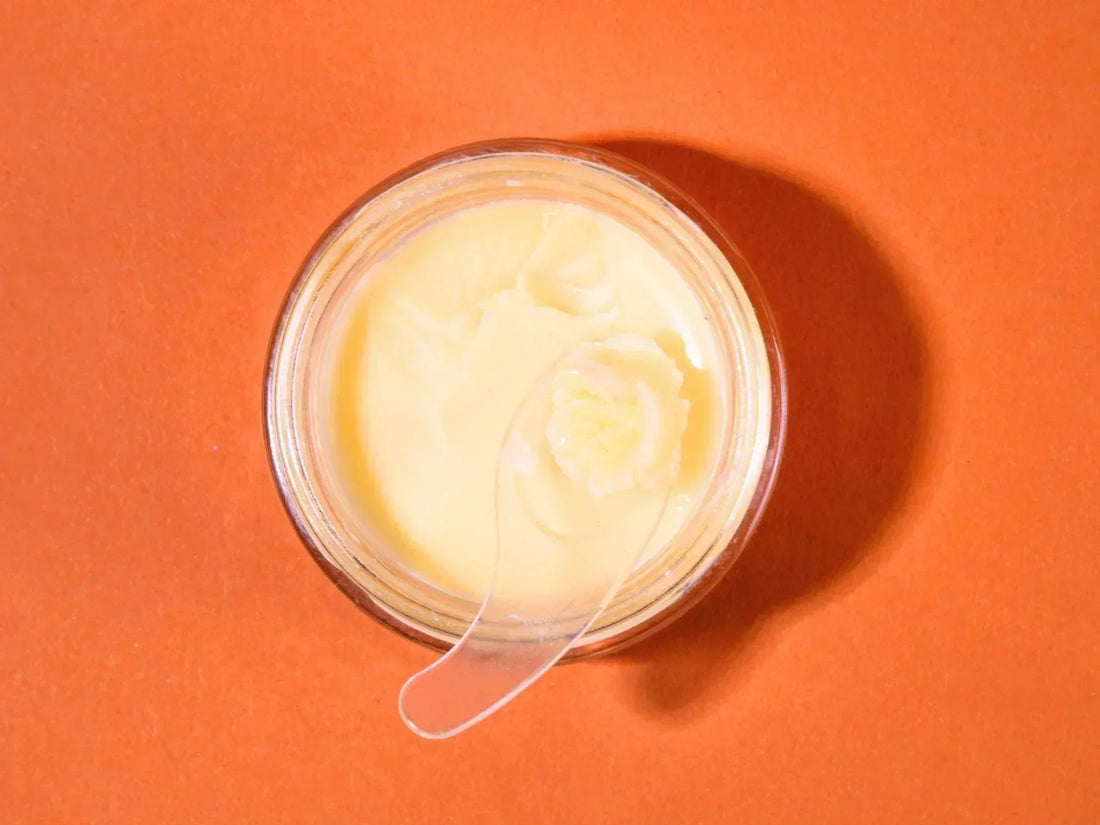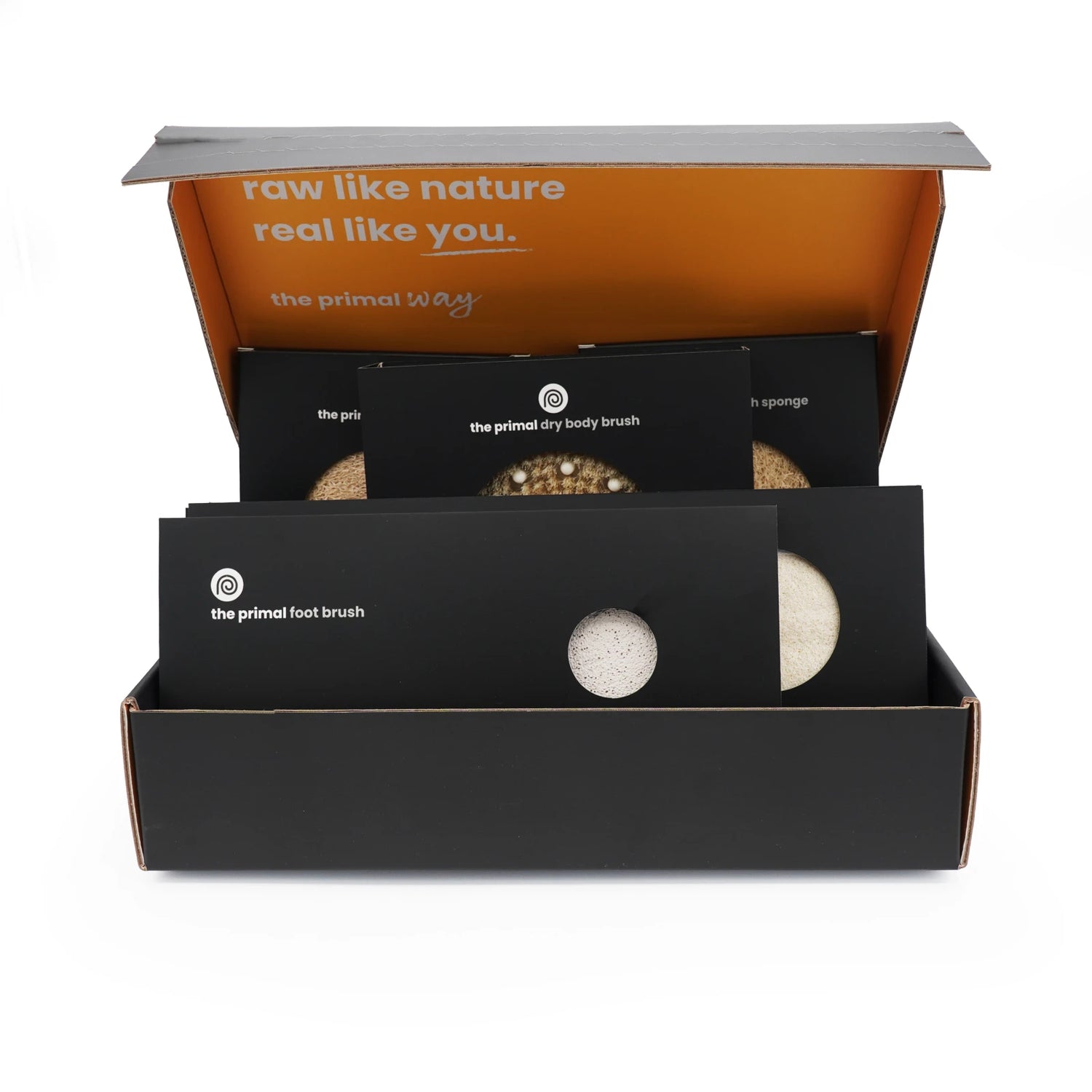
How to Make Tallow Balm with the Best DIY Tallow Balm Recipe
Share
Whether you are looking for clean skincare or follow a nose-to-tail lifestyle, learning how to make tallow balm at home gives you access to inexpensive, natural remedies for healthier, more radiant skin. So, let’s walk through the process using a simple DIY tallow balm recipe.
What Is Tallow?
Tallow is a nutritious, natural fat rendered from beef or lamb. It has been used for cooking, candle-making, skincare, and healing for centuries.
Recently, people have been returning to old-school skincare solutions because they have rediscovered the effectiveness of natural skincare routines.
Unlike plant oils that sometimes oxidize quickly, tallow is very stable. It contains fatty acids that are similar in structure to our skin, so it can be absorbed quickly and moisturize deeply without feeling heavy or clogging pores.
You can simply buy The Primal 100% Grass-fed, Grass-finished Tallow Balm or make your own version at home.
If you wonder how beef tallow balm will affect your face, you can take a look at these beef tallow for skin before and after results with photos and enjoy the benefits of natural skincare.

How to Make Tallow Balm at Home?
Learning how to make tallow balm yourself is easier than you might think, and it's one of the most satisfying DIY projects because the results are amazing. You’ll only need a few natural ingredients and some basic kitchen equipment.
The best part of making tallow balm at home is controlling every ingredient that goes into it, so it can be 100% natural, non-toxic, and exactly as you want.
Simply put, the process includes buying beef tallow, melting the tallow, mixing it with a lighter oil to create a smoother texture, and, if you want, adding some essential oil for fragrance and added skin benefits.
So, let’s start off the step-by-step process by sourcing high-quality beef tallow.
Where to Find Beef Tallow?
We need tallow from grass-fed, pasture-raised cows because it's richer in nutrients like vitamins A, D, E, and K, which are all essential for healthy skin.
You can find high-quality tallow from:
- Farmers' markets: The farmers who raise cattle sell tallow or beef fat with their meat products.
- Online: If you can’t find tallow around you, just look for grass-fed, organic beef tallow online and buy after reading reviews and checking quality certifications.
- Local butchers: Ask for rendered beef tallow or raw suet (beef fat around the kidneys that you can render at home).
DIY Rendering
Rendering suet into tallow is easy but takes a little time and patience. You just need to heat chopped suet on low until the fat melts, then strain it twice. If you do it properly, your homemade tallow will have a fresh, clean scent.
So, whether you buy beef tallow or render it yourself, you need the following tallow balm recipe to make healthy, DIY tallow balm at home.

The Easiest DIY Tallow Balm Recipe
Although it is easier to buy tallow balm, making it at home enables you to add or remove ingredients as you like. It can be rich and firm, light and whipped, or scented with your favorite essential oils.
You only need the following materials, ingredients, and instructions to make DIY homemade beef tallow balm. You can also use this DIY tallow balm recipe + photo if it is your first time making tallow balm.
Materials
- A double boiler (or a heat-safe bowl over a pot of simmering water)
- A mixing spoon or silicone spatula
- Clean glass jars or metal tins for storage
- A small funnel
- A hand mixer (for whipped tallow balm)
Ingredients
- 1 cup grass-fed beef tallow
- 2 tbsp of a liquid oil (olive oil, jojoba oil, avocado oil, or sweet almond oil)
- 10–20 drops of essential oil (optional)
Jojoba oil is great for oily skin, avocado oil is extra moisturizing, and olive oil is a classic all-rounder. So, choose based on your skin type and needs.
Instructions
- Melt tallow in a double boiler over low heat. You want it to melt slowly to keep its nutrients and avoid a burnt or beefy smell. Stir occasionally.
- Add liquid oil when the tallow is melted and stir to make a softer, more spreadable texture.
- Remove the mixture from the heat and let it cool for a few minutes (so it’s warm, not hot) before adding essential oils (if you are adding them). This maintains the delicate properties of the oils.
- Pour the balm into clean glass jars or tins using a funnel. Leave some space at the top.
- Let the balm cool completely at room temperature. It will firm up into a nice, buttery texture as it cools.
- Seal tightly with a lid. Your balm is ready to use!
Whipped Tallow Balm
To make whipped balm, place the cooled but still-soft mixture in a bowl and whip it with a hand mixer until it is light and fluffy.
Solid Tallow Balm vs. Whipped Tallow Balm vs. Scented Tallow Balm
The table below compares the three main types of beef tallow balm: solid, whipped, and scented.
|
Type |
Texture |
Best for |
Notes |
|
Solid Tallow Balm |
Firm, dense butter |
Body, rough skin areas |
Easier to store and lasts longer |
|
Whipped Tallow Balm |
Light, fluffy |
Face, sensitive areas |
Feels airier and luxurious |
|
Scented Tallow Balm |
Customizable |
Daily use or gifts |
Essential oils can boost benefits |
Tallow has these different types because each can be more suitable for special needs. For example, if you love rich creams, solid tallow balm can be a good choice.
If you prefer an airy feel, whip your balm after cooling, or buy whipped tallow balm. You can also use unscented versions if you like the natural smell of tallow or scented ones if you enjoy a nice, soothing aroma.
However, if you don’t like hands-on experiences, are afraid you can’t make it right, or prefer to buy high-quality, safe skincare products, here you can find the best tallow balm for face, lips, and body.
Tallow Balm Recipe Variations
- Healing Balm: Add a few drops of calendula or chamomile oil to increase soothing and anti-inflammatory effects.
- Anti-aging Balm: Add rosehip seed oil and frankincense essential oil to help reduce wrinkles and age spots.
- Baby Balm: Skip essential oils completely for an ultra-gentle formula safe for babies' delicate skin.
- Cooling Muscle Balm: Add peppermint or eucalyptus oil to make a soothing balm that is great after workouts.
So, if you are making tallow balm at home, you can be creative and try different ingredients. However, it is wise to avoid the following common mistakes to make the best homemade balm.
Common Mistakes to Avoid When Making Tallow Balm
- Overheating tallow gives it a burnt smell and destroys valuable nutrients. Always melt it slowly over low heat.
- Don’t add essential oils too soon. If the mixture is still hot, it can evaporate the delicate oils, losing their benefits and fragrance.
- Using only tallow can make the balm feel heavy or greasy. Adding lighter (liquid) oils helps you make a perfect texture.
- Dirty equipment: Make sure all jars and tools are clean and dry because moisture or bacteria can cause spoilage.
An important step that is usually missed after making or buying tallow balm is storing it. If you store your tallow balm properly, you can extend its shelf life.
How to Store Tallow Balm to Extend Shelf Life?
While tallow balm is naturally stable thanks to its low moisture content and natural preservation, proper storage can maximize its freshness and make it last from 6 months to +2 years.
- Store your balm in a cool, dry, dark place, away from direct sunlight and heat to avoid oxidation.
- Always use clean fingers or a dedicated spatula to scoop out tallow balm to prevent bacteria or moisture.
- Refrigerate the balm if you live in a hot, humid climate. It can firm up more, but will stay fresher longer. Learn how long beef tallow lasts and how to store it to extend shelf life.
How to Use Tallow for Skin?
You can use tallow for skin in the following ways. It can be a:
- Daily moisturizer: Massage a tiny amount into damp skin after showering or washing and drying your skin. A little goes a long way!
- Face balm: Apply a small pea-sized amount at night and wake up to glowing skin.
- Lip balm: Tallow balm is perfect for healing dry, cracked lips, especially in winter.
- Baby balm: Since tallow is gentle and natural, you can safely use it for babies. It is great for diaper rash, dry patches, and minor irritations.
- First aid balm: Apply to minor cuts, scrapes, and burns to speed healing and reduce scarring.
Why Is Tallow Good for the Skin?
Tallow is an effective skincare solution because it naturally contains [1] [2] [3]:
- Vitamin A: Speeds up healing, supports skin cell regeneration, and reduces inflammation
- Vitamin D: Boosts skin barrier function and helps prevent dryness
- Vitamin E: An antioxidant that protects skin cells from damage
- Vitamin K: Helps improve skin elasticity and may reduce dark spots
- Conjugated Linoleic Acid (CLA): Has anti-inflammatory and antimicrobial effects
Synthetic moisturizers usually sit on the skin’s surface, while tallow absorbs quickly and nourishes deeply. It’s especially helpful for dry, aging, sensitive, or eczema-prone skin.
You can also customize the ingredients of your homemade tallow balm to give it special features based on your needs and enjoy the benefits of tallow for skin.
FAQs
Is Tallow Balm Greasy?
If the balm contains a lighter oil like jojoba or olive oil, it absorbs quickly without feeling greasy. It creates a protective layer that nourishes without clogging pores.
Can I Use Tallow Balm on My Face?
Yes, absolutely! Tallow balm can help balance oil production and soothe sensitive or acne-prone skin. Always patch-test first to see how your skin reacts.
Does Tallow Balm Smell Bad?
No, good-quality, grass-fed tallow has a very mild, almost creamy scent. If you’re sensitive, you can use essential oils for a nice, pleasant fragrance.
Is Tallow Balm Good for Acne-Prone Skin?
Yes, tallow contains antimicrobial fatty acids that can help reduce breakouts.
Summary
If you enjoy DIY approaches, the above tallow balm recipe teaches you how to make tallow balm hassle-free at home. By making your own at home, you get a clean, chemical-free moisturizer that heals and protects your skin.
Whether you're looking to heal dry or damaged skin, simplify your skincare routine, or just create something beautiful and nourishing with your own hands, DIY tallow balm is a fantastic place to start!


